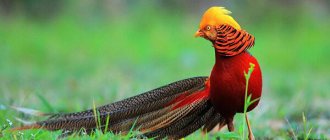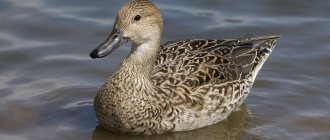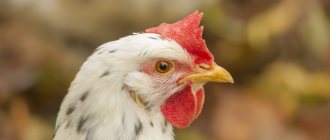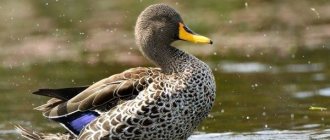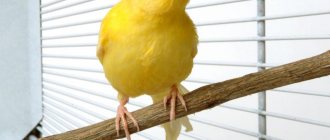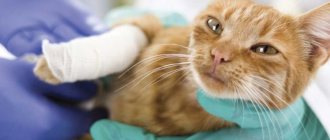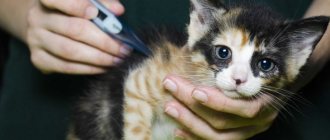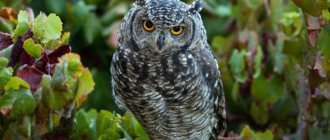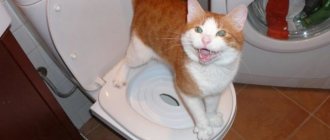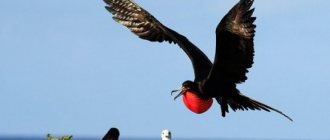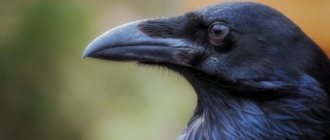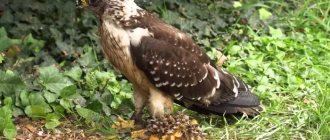The basic structure of a bird's feather was considered by many of us as part of the school curriculum. If we pay more attention to this topic, it will become clear how little we know about it. The design of bird plumage is a complex ornament where nature has thought through everything down to the smallest nuances. In the article we will talk about the specifics of the formation of the feather structure, its varieties and functions that birds use in everyday life.
Feather structure
Its structure consists of two parts: the rod, or trunk, and the fan. The lower thickened part of the rod is called the edge. Inside it there is keratinized dried tissue.
The fan consists of beards of the first order, which are attached to the rod. Also, the structure of the feather provides for the presence of second-order barbs, which are attached to the first-order barbs. They are located perpendicular to the latter. They have special hooks, or cilia, thanks to which all the beards are tightly fastened together.
The beards consist of two layers. The outer one is called the horn, and the inner one is called the medulla. It is built from dried dead cells with the inclusion of air bubbles. The shape of a bird's feather and its size may vary, but the principle of its structure is always the same as described above.
History of appearance
Plumage is not only a distinctive feature of birds and their calling card. This is a necessity that appeared among winged birds as a result of evolutionary transformations. The ancestors of birds, predatory dinosaurs, were the first to acquire plumage. They were called Sinosauropteryx.
Over time, fibrous fluff grew on the surface of their skin, protecting them from the decrease in temperature on the planet. Plumage in the form in which it exists now appeared in Microraptor and Caudipteryx.
The evolutionary processes occurring with ancient lizards due to climate change have formed unique material. Without it, the continued existence of many species of dinosaurs became impossible.
Coverts
These bird feathers cover the entire body, giving it a streamlined shape. Depending on their location on the bird’s body, they can be divided into shoulder, neck, parietal, dorsal, supra-tail, crop, pectoral, belly coverts, shin, small, medium and large wing coverts.
Covert feathers are located throughout the bird's body in a tiled pattern. They perform protective and heat-saving functions, since the layer they form practically does not allow air to pass through.
Coloring
The main pigment is melanin, which produces all colors from black to yellow. It is located in clumps between keratin cells, where it is delivered by melanocytes. There are also additional (carotenoids), for example, in pheasants in breeding plumage (red astaxanthin), the bright yellow color of canaries (zooxanthin), in addition, there are unique carotenoids in African turacos (porphyrin (red) and turcoverdin (green), which differ in content copper and iron, respectively). Most often, tropical birds have additional pigments, since they somewhat simplify the microstructure of the feather and lead to a decrease in thermal insulation properties, which is critical for cold regions. The blue color in the coloration is due to the interference of layers, rather than individual pigments: a layer of keratin, a layer of hollow cells with thick layers, and a layer of melanin.
Fly feathers
These bird feathers can be divided into two groups:
- first order;
- second order.
The flight feathers are long and straight. An excellent example of this is the quill pen, which was used to write in ancient times.
The first order flight feathers are attached to the back of the bird's hand. These feathers are the largest. They provide lift and thrust during flight. The number of such feathers is usually 10-15 pieces. Thus, representatives of the woodpecker family have 10 first-order flight feathers, ducks have 11-12, and some grebes have as many as 17. An example of what a goose’s flight feather looks like:
Secondary flight feathers are attached to the skin on the ulna. They represent the load-bearing surface of the wing. They are characterized by their smaller size than first-order feathers.
Their number may also vary. For example, hummingbirds have only six of them, but some members of the albatross family have 37.
Separately, it is worth highlighting the so-called wing. This is a collection of small flight feathers that are attached to the first finger. Their number is usually 3-4 pieces, sometimes - 6.
Notes
- Collier's Encyclopedia = Collier's Encyclopedia 1997, 24. - NY: Holiday House, 1997. - 1664 p. — ISBN 0-02-864839-0.
- Apterilia // Encyclopedic Dictionary of Brockhaus and Efron: in 86 volumes (82 volumes and 4 additional). - St. Petersburg, 1890-1907.
- Xu, X. and Guo, Y. (2009). The origin and early evolution of feathers: insights from recent paleontological and neontological data. Vertebrata Pal Asiatica
47 (4): 311–329. - Evolutionary origins of feathers Archived May 20, 2010. (Richard Prum, Alan Bash, “Dinosaurs or birds: who fledged first?” // “In the World of Science” No. 7, 2003)
- JR Lavas Dragons from the dunes: the search for dinosaurs in the Gobi Desert. 1993—138 p.
- David B. Weishampel, Peter Dodson, Halszka Osmólska The Dinosauria. University of California Press, 2004. - 861 p.
- Max K. Hecht The beginnings of birds: proceedings of the International Archaeopteryx Conference, Eichstätt, 1984. Freunde des Jura-Museums Eichstätt, 1985 - 382 p.
- Dzik, J., Sulej, T. and Niedzwiedzki, G. (2010). "Possible link connecting reptilian scales with avian feathers from the early Late Jurassic of Kazakstan." Historical Biology
,
22
(4): 394–402. [1] - Rautian (1978). “A unique bird feather from Jurassic lake deposits in the Karatau.” Paleontological Journal, 4: 520–528.
- ↑ 12
"Dinosaurs." A Concise Natural History". David E. Fastovsky (University of Rhode Island) and and David B. Weishampel (The Johns Hopkins University), With illustrations by John Sibbick, Cambridge University Press 2009, ISBN 978-0-511-47941-0 (e-book), ISBN 978-0-521-88996-4 (hardcover), ISBN 978-0-521-71902-5 (paperback), part III: "Saurischia: meat, might, and magnitude", chapter 9 "Theropoda" I: nature red in tooth and claw”, section “Theropod lives and lifestyles”, subsection “The skinny on skin”, Page 199 - Collier.
Collier's Encyclopedia = Collier's Encyclopedia 1997, 24. - NY: Holiday House, 1997. - 1664 p. — ISBN 0028648390. - ↑ 1 2 3 4 V. D. Ilyichev, N. N. Kartashev, I. A. Shilov.
General ornithology. - M.: Higher School, 1982. - 464 p. - James R. Belthoff, Alfred M. Dufty, Jr., Sidney A. Gauthreaux, Jr.
Plumage Variation, Plasma Steroids and Social Dominance in Male House Finches // The Condor. - 1994. - T. 96, No. 3. - P. 614-625. - R. Dale Guthrie.
How We Use and Show Our Social Organs
(unspecified)
(unavailable link).
Body Hot Spots: The Anatomy of Human Social Organs and Behavior
. Retrieved October 4, 2008. Archived September 8, 2006.
Downy
This group can be divided into two subgroups: down feathers themselves and down. Down feathers have longer shafts than down. However, their beards do not interlock into a fan. Down has a less developed, soft core. The beards also don’t stick together in the fan.
Both down and down feathers are designed for insulation. They are located under the contour ones. When the chicks first hatch, they have only down; covert feathers grow later.
Functions of pens
In the external structure of birds, feather cover plays a special role:
- Helps support the body in the air - participates in flight.
- Maintains body temperature.
- Helps camouflage. Thus, the white arctic partridge, due to its color, is practically invisible in the snow, which helps the bird escape from numerous predators.
It is the feathers that create the outline of the bird’s body, its appearance.
Special
Such feathers include vibrissae, decorative feathers, tassel feathers, and powder feathers.
Vibrissae are feathers that have lost their barbs. They only have a stem. They are located near the bird's beak and perform a tactile function. Also, small barbless feathers can be found on the eyelids and nostrils.
Decorating feathers are various modifications of contour feathers. They appear during the mating season.
Tassel feathers are feathers with a long thin shaft and grooves that are loosely interlocked with each other. They are usually located around the excretory duct of the coccygeal gland.
Powder feathers are a type of special feathers, the beards of which break as soon as they grow. As a result, powder is formed, covering other feathers with a thin layer. It is needed to make them waterproof.
general characteristics
Birds are warm-blooded vertebrates that reproduce by laying eggs. Most of them can fly. Flightless birds lost this opportunity for the second time. All representatives of the class have a beak that is completely devoid of teeth. The main distinguishing feature is the feather cover of the body.
To fly, the birds had to change greatly. During evolution, their forelimbs became wings, and many vertebrae fused together to form a strong frame. Some of their bones are filled with air, providing them with additional lightness. Flying birds have a flat bony outgrowth on the sternum - the keel, to which the muscles that lower the wing are attached.
The ability to fly was reflected in the body shape, respiratory and digestive systems. The body of birds is streamlined, which reduces friction with air. They are capable of covering significant distances and traveling hundreds or even thousands of kilometers. This requires a lot of energy, and an accelerated metabolism helps to obtain it.
Birds are the most numerous group of higher vertebrates. More than 10,600 living species are known. They settled in almost every corner of the planet, from isolated ocean islands to megacities, from deserts and tropics to the interior of Antarctica.
What does color depend on?
The feathers of different birds can have a wide variety of colors. It all depends on the amount of certain pigments. Feather color is regulated by the following substances:
- carotenoids;
- porphyrins;
- melanins.
The first group of pigments creates orange, yellow, red and pink shades. These substances pass into the bird's plumage from the food it eats. If the animal's diet does not contain enough products containing crotinoids, its plumage may change to gray.
Porphyrins create green shades.
Melanins form the brown and black color of feathers. They can also create some shades of yellow.
In addition, the color of a bird may depend not only on the pigments contained in the feathers, but also on the structure of the first and second order barbules. Depending on how the barbs are structured and positioned, feathers reflect sunlight at different wavelengths. Thus, the feathers can shimmer in the sun.
Since the production of many pigments in the bird’s body is regulated by the liver, a change in color may indicate certain diseases, such as chlamydia, vitamin A deficiency, excess zinc, etc.
Life cycle and its stages
Bird feathers go from embryo to aging much like human appendages on the skin. Like all vertebrates, the skin of representatives of the feathered world has two layers. These are the epidermis, epithelial tissue, and the dermis, connective tissue.
When the epidermis and dermis interact, feathers are born. At first it resembles a tubercle or the rudiment of a scale. Over time, a characteristic growth appears, the base of which, as it grows, goes deeper into the skin, forming a purse.
The growth is located on top of the epidermis, and below it there is living tissue with blood vessels. As the feather growth grows, it stretches and the keratinized tubular tissue is pushed out of the pouch. In this process, feather barbs are formed. Their appearance depends on the type of feather.
At the end of the life cycle, the cells of the feather papilla, through which feeding occurred, die. So, the beards are pushed out, after which a kind of brush is formed. This process ends the life of the old feather, after which a new young one will appear.
How do birds take care of their feathers?
Birds devote about two hours a day to this activity.
They can clean their feathers in different ways. For example, fast-flying birds, such as swallows, swifts, and terns, plunge into the water in flight. Some people wet their feathers in rainwater. Birds can also take dust baths to care for them.
Birds remove foreign objects caught in their plumage using their beaks.
There is also a special product for making feathers elastic and eliminating pathogens. This is the fat that is secreted by the coccygeal gland of birds. First, the birds apply it to their feet, and then rub their heads with their paws.
To disinfect feathers, some birds deliberately damage anthills. In this case, formic acid gets onto the bird’s body. It helps get rid of microorganisms and other parasites living in the plumage.
World records
Nature sometimes surpasses itself and produces unprecedented miracles. She didn't ignore the birds either. Here are some interesting facts about the record holders.
Peacocks are the birds with the most beautiful feathers on the planet. They owe this feature to the specific structure of their beards, which reflect sunlight.
Japanese ornamental roosters have the longest tail feathers in the world. Their length reaches 5 meters.
Argus, which looks like a peacock, is also famous for its long plumage. Its average tail feathers are 150 cm long.
Birds of paradise are characterized by aesthetically attractive plumage. Its color range varies over a wide range of shades. The length and outline of this natural decoration fascinates with its bizarre diversity. For example, the colorful tail of birds sometimes takes on an intricate spiral shape.
If the article interested you, the information was useful, leave comments under it and share with friends on social networks.
Interesting Facts
Having examined the features of the bird class and the external structure of birds, we learn some interesting facts from the life of birds:
- Birds do not have teeth, which helps them reduce the mass of their skull and makes flight possible.
- The wingspan of some birds (for example, albatrosses) can be more than 3 meters.
- The approximate number of feathers on swans is more than 25 thousand.
- Once or twice a year, birds molt, completely getting rid of their feathers and acquiring new ones. But due to the fact that the process occurs gradually, most birds do not lose the ability to fly.
- During molting, geese, ducks and swans lose all their primary wings at the same time and are unable to fly for some time.
- Flamingos have amazingly beautiful pink feathers. What causes such an unusual color? Birds eat crustaceans rich in dyes, which is why their plumage acquires a delicate pink tint.
Studying the external structure of birds is not an easy task. Since there are a large number of birds, each species has characteristic features. However, they all have common features, which allowed scientists to unite birds into a single class.
The external structure of birds - features, interesting facts and examples on News4Auto.ru.
Our life consists of everyday little things that in one way or another affect our well-being, mood and productivity. I didn’t get enough sleep - my head hurts; I drank coffee to improve the situation and cheer myself up - I became irritable. I really want to foresee everything, but I just can’t. Moreover, everyone around, as usual, gives advice: gluten in bread - don’t go near it, it will kill you; A chocolate bar in your pocket is a direct path to tooth loss. We collect the most popular questions about health, nutrition, diseases and give answers to them that will allow you to better understand what is good for your health.
Legs
Birds' legs are used to move along the ground, trees and other surfaces. The length of the legs and their structure depend on the habitat. For example, aquatic species have webbed feet for swimming. Running bird species have especially strong legs.
When walking, the bird rests on its toes. The toes are opposed so that the bird can grasp tree branches. 3 fingers are located in the front and one in the back. There are claws at the ends of the fingers.
The remaining bones of the foot are assembled into a shank, which softens the landing.
